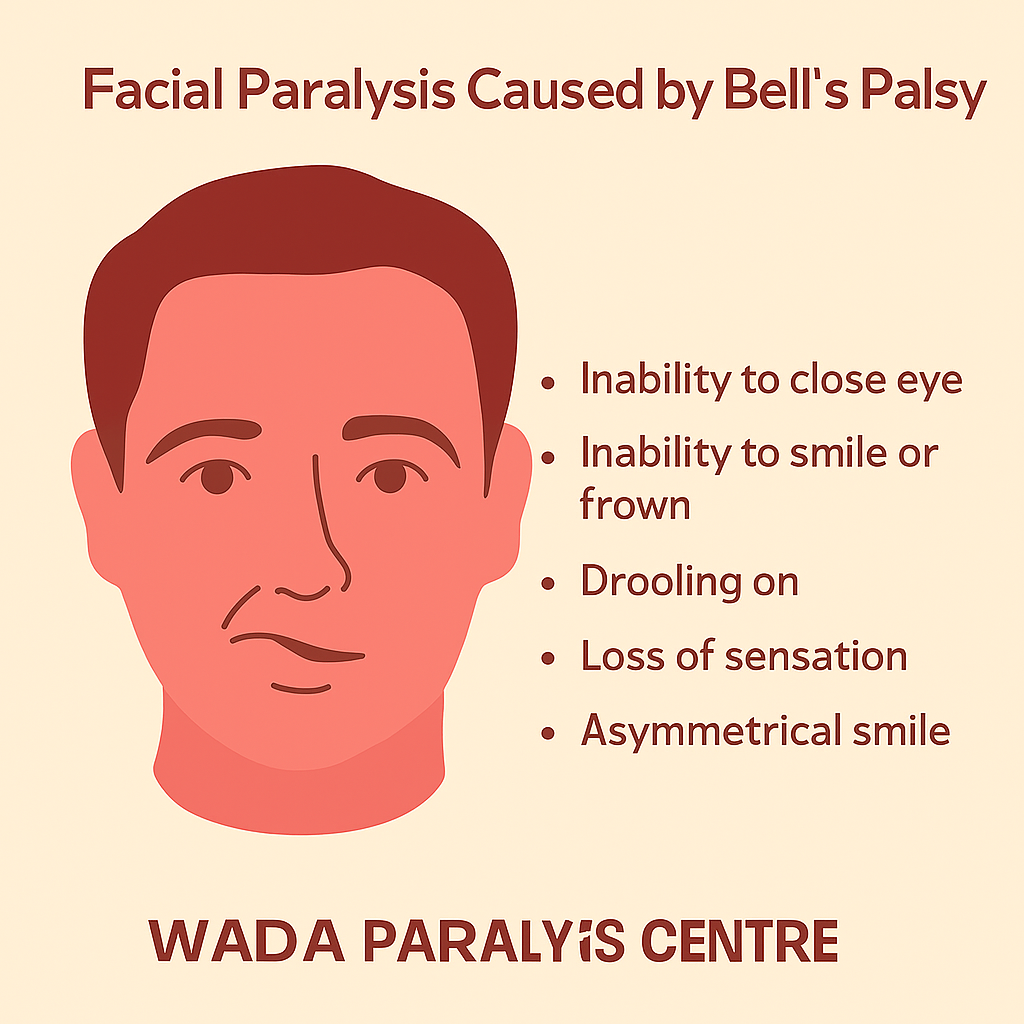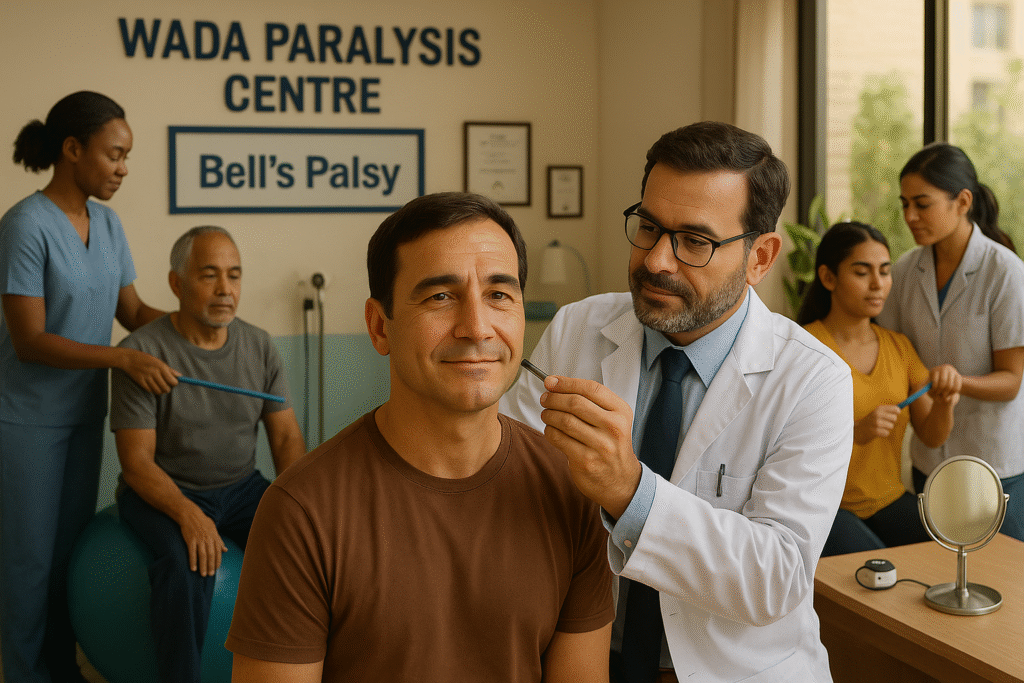



Table of Contents
Toggle
Bell’s Palsy is a temporary condition caused by inflammation or compression of the facial nerve (cranial nerve VII). This nerve controls the muscles responsible for facial expressions, blinking, and even taste sensations. When it becomes inflamed, signals from the brain can’t reach the facial muscles properly, leading to weakness or drooping on one side.
A leading theory behind the development of Bell’s Palsy is the reactivation of certain viruses that lie dormant in the body. These include:
These viruses can inflame the facial nerve, disrupting its normal function and leading to facial paralysis.
Sometimes, the body’s immune system may overreact to infections, causing inflammation around the facial nerve. This nerve swelling can compress the nerve inside the narrow bony canal of the skull, leading to partial or full paralysis.
Certain individuals are more prone to developing Bell’s Palsy due to underlying health conditions or physiological states, such as:
Pregnant Women – especially during the third trimester or shortly after childbirth. Hormonal changes and fluid retention may play a role here.
People with Diabetes – due to nerve vulnerability.
Those suffering from Upper Respiratory Infections (URIs) – like the flu or cold.
Although Bell’s Palsy is often idiopathic, meaning no exact cause is found, viral reactivation remains a prime suspect. By understanding these risk factors, individuals can better manage their health and seek timely medical care when symptoms arise.
While symptoms can range from mild to severe, here are the most commonly reported signs:
One of the hallmark signs is a noticeable facial droop, typically occurring on just one side. This may give the appearance of a lopsided smile or an inability to raise the eyebrow.
People with Bell’s Palsy may struggle to:
The symptoms of Bell’s Palsy usually develop suddenly and worsen rapidly, often reaching their peak severity within 48 hours of onset.
Though Bell’s Palsy is often temporary, starting treatment—such as corticosteroids or physical therapy—early can significantly improve outcomes. If you or someone you know experiences sudden facial changes, don’t delay in seeking medical advice.
Doctors diagnose Bell’s Palsy through:
Seek immediate medical help if symptoms like headache, limb weakness, or speech difficulty appear — these may indicate a stroke.
Prednisone is the most effective treatment when started within 72 hours of symptom onset. It reduces nerve inflammation and speeds up recovery.
Often combined with steroids, antivirals target underlying viral infections. Their use is most beneficial when a viral cause is suspected.
Gentle facial movements help maintain muscle tone and prevent stiffness. Therapy also aids in regaining control over facial expressions.
Use lubricating eye drops and wear a protective patch during sleep. These steps prevent dryness and protect the eye from injury.
Surgery is considered only in long-term cases with no improvement. It may involve nerve decompression or facial reanimation techniques.
Most patients recover fully within 3 to 6 months. Starting treatment early dramatically improves the chances of a complete recovery.
Q1: Is Bell’s Palsy permanent?
A: No—most recover fully in 3–6 months with timely steroid therapy and therapy.
Q2: What’s the best time to start treatment?
A: Within 72 hours of onset—early steroids double recovery chances.
Q3: Can facial exercises speed recovery?
A: Yes! Gentle massages and exercises improve muscle tone and coordination.
Q4: How do I protect my eye if I can’t close it?
A: Use lubricating drops, apply ointment at night, and patch the eye during sleep.
Q5: Is Bell’s Palsy contagious?
A: No—it’s not contagious, even if caused by a virus.
Q6: When should I schedule an MRI or CT scan?
A: If symptoms persist beyond 3 months or worsen, or neurological signs appear.
Bell’s Palsy, while alarming, is usually temporary and treatable. Early diagnosis, steroid treatment, eye protection, and physical therapy greatly enhance recovery. If symptoms persist beyond six months, consult a neurologist or reconstructive specialist.

Experience holistic and effective care for Paralysis, Bell’s Palsy, Sandhivat, and other neuro-muscular disorders—led by the trusted expertise of Dr. Bharat Patil.
👨⚕️ Dr. Bharat Patil
Ayurvedic Paralysis, Bell’s Palsy & Sandhivat Specialist
📍 Chandip, Near TDC Bank, Ambadi, Virar Road, Vasai
District Palghar, Maharashtra, India
📧 bharatpatil1303@gmail.com
📱 +91 99759 90102
🌐 www.wadaparalysiscenter.com
🕰️ Book Your Appointment Today
Take the first step toward natural and effective recovery.
📞 Contact us now to schedule your consultation!
